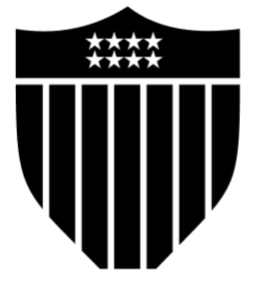The Birth of Handshake
Handshake (HNS) was launched in February 2020 as an innovative decentralized naming protocol designed to replace the traditional Domain Name System (DNS). Handshake’s primary goal is to create a more secure, censorship-resistant, and decentralized system for managing internet domain names. It enables users to register and manage top-level domains (TLDs) on a blockchain, eliminating the need for centralized authorities like ICANN.
Handshake was created by a group of developers and contributors, including Joseph Poon, co-author of the Lightning Network whitepaper, and Andrew Lee, the CEO of Purse.io. The project is open-source and community-driven, with a focus on fostering a decentralized web.
The Early Days of Handshake
Handshake was conceived as a solution to the centralized nature of the internet's DNS infrastructure, which is controlled by a small number of organizations. The project’s creators envisioned a system where users could manage and secure their own domains without relying on intermediaries.
During its early development, Handshake attracted significant attention from developers and investors. Notable backers included venture capital firms like Andreessen Horowitz and Sequoia Capital, as well as influential individuals in the cryptocurrency space. The Handshake team raised approximately $10.2 million through private funding to support its development, and the majority of the funds were donated to open-source projects to further decentralization efforts.
Handshake officially launched its mainnet on February 3, 2020, marking the start of its journey as a decentralized naming and certificate authority.
Major News and Milestones
Mainnet Launch (2020):
The Handshake mainnet launch allowed users to register and manage domain names on the blockchain for the first time, demonstrating the potential of a decentralized DNS system.Name Auctions and Early Adoption:
Handshake introduced a unique auction system for domain registration, where users bid for TLDs using the native HNS cryptocurrency. This mechanism ensures fair distribution and prevents domain squatting.Partnerships and Integrations:
Handshake has partnered with several decentralized web projects and web hosting services to promote adoption. Platforms like Namecheap and Fleek support Handshake domains, increasing their accessibility and usability.Increased Recognition:
Handshake’s decentralized DNS gained traction as an alternative to traditional systems, particularly among privacy advocates and decentralized web enthusiasts.
Handshake Mining and Rewards
Handshake uses a Proof of Work (PoW) consensus mechanism to secure its blockchain, employing the Blake2b + SHA3 hashing algorithm. This algorithm is optimized for ASIC mining, making it efficient and secure while reducing the dominance of GPUs.
Block Rewards and Halving Schedule
The initial block reward for Handshake miners was 2,000 HNS per block.
Handshake follows a halving schedule, reducing rewards by 50% approximately every 4 years:
2020–2024: 2,000 HNS per block.
2024–2028: 1,000 HNS per block.
2028–2032: 500 HNS per block.
The total supply of Handshake is capped at 2.04 billion HNS, ensuring a controlled and predictable issuance of coins over time.
Popularity and Adoption
Handshake has gained recognition as a pioneering project in the decentralized web space. Its popularity is driven by:
Decentralized DNS:
Handshake enables users to bypass traditional DNS authorities, reducing censorship and enhancing internet freedom.Community-Driven Governance:
The project’s open-source nature and decentralized structure have fostered a strong community of developers, miners, and users.Privacy and Security:
Handshake’s blockchain-based system provides enhanced security for domain registrations, reducing the risk of domain hijacking and phishing attacks.Integration with Web 3.0:
Handshake aligns with the goals of Web 3.0, making it a valuable tool for creating a decentralized internet ecosystem.
Technology and Innovations
Handshake introduces several technological advancements that distinguish it from traditional DNS systems:
Blockchain-Based Naming:
Domain ownership and management are recorded on Handshake’s blockchain, providing transparency and immutability.Decentralized Certificate Authority:
Handshake eliminates the need for centralized certificate authorities by allowing users to verify domains directly on the blockchain.Unique Auction System:
Domains are distributed through a decentralized auction process, ensuring fair and transparent ownership.Blake2b + SHA3 Algorithm:
This PoW algorithm ensures network security and efficiency while being resistant to certain types of attacks.
Challenges and Criticisms
While Handshake has made significant strides, it faces challenges:
Adoption Barriers:
Despite its innovative features, Handshake domains require users to install additional software or browser extensions to access them, limiting mainstream adoption.Competition:
Handshake competes with other decentralized naming systems like ENS (Ethereum Name Service) and Unstoppable Domains, which have gained traction in the Web 3.0 space.Regulatory Concerns:
As a decentralized DNS, Handshake could face scrutiny from governments and organizations that favor centralized control over the internet.
Cultural and Community Impact
Handshake has cultivated a passionate community that values decentralization, privacy, and freedom on the internet. The project’s commitment to donating funds to open-source initiatives reflects its ethos of supporting innovation and collaboration.
The decentralized DNS system championed by Handshake aligns with broader movements to create a more equitable and censorship-resistant internet, making it a key player in the push toward Web 3.0.
The Future of Handshake
Handshake aims to continue its mission of decentralizing the internet’s DNS infrastructure. Future priorities include:
Expanding Accessibility:
Integrating Handshake domains into mainstream browsers and web hosting platforms to drive adoption.Promoting Web 3.0 Integration:
Strengthening partnerships with decentralized web projects to create a seamless ecosystem for users.Scaling the Network:
Enhancing scalability and usability to support growing demand for decentralized naming solutions.
With its innovative approach to internet infrastructure, Handshake is poised to play a significant role in shaping the decentralized web and empowering users with greater control over their online identities.


